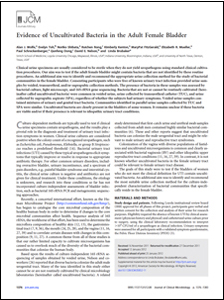BACKGROUND: The urinary system is the most common site for all hospital-acquired infections, accounting for approximately 40% of all nosocomial infections. The US Centers for Medicare & Medicaid Services has enacted 2 policies that have focused considerable attention on the optimal use of indwelling catheters in the acute and long-term care settings and the prevention of complications including catheter-associated urinary tract infection (CAUTI).
OBJECTIVES: This is the first of a 2-part Evidence-Based Report Card reviewing current evidence pertaining to nursing actions for prevention of CAUTIs in patients with short- and long-term indwelling catheters. Part 1 reviews evidence for materials for catheter construction, including incorporation of antimicrobial substances into the catheter, and selection of catheter size.
SEARCH STRATEGY: Nursing actions for prevention of CAUTIs were identified based on search of electronic databases and Web-based search engines for national or international clinical practice guidelines focusing on this topic. Evidence related to 2 common nursing interventions, selection of the material of construction and selection of catheter size, was identified by searching electronic databases MEDLINE, CINAHL, the Cochrane Library, and the ancestry of articles identified in these searches.
RESULTS: We found robust evidence supporting insertion of a silver alloy-coated catheter to reduce the risk of CAUTIs for up to 2 weeks in adult patients managed by short-term indwelling catheterization. We also found evidence supporting the insertion of an antibiotic-impregnated catheter for reduction of CAUTI risk for up to 7 days. There was insufficient evidence to determine whether regular use of an antimicrobial catheter reduces the risk of CAUTIs in adults managed with long-term indwelling catheterization. There was insufficient evidence to determine whether selection of a latex catheter, hydrogel-coated latex catheter, silicone-coated latex catheter, or all- silicone catheter influences CAUTI risk. Expert opinion suggests that selection of a smaller French-sized catheter reduces CAUTI risk, but evidence is lacking.
IMPLICATIONS FOR PRACTICE: Insertion of an antimicrobial catheter, either silver alloy or antimicrobial coated, is recommended for patients with short-term indwelling catheterization. There is insufficient evidence to recommend their use in patients managed by long-term indwelling catheterization. Selection of smaller French sizes for short- or long-term catheterization is thought to improve comfort and reduce CAUTI risk, but further research is needed to substantiate these best practice recommendations.
Written by:
Parker D, Callan L, Harwood J, Thompson DL, Wilde M, Gray M. Are you the author?
St Joseph Hospital, Bellingham, Washington, USA.
Reference: J Wound Ostomy Continence Nurs. 2009 Jan-Feb;36(1):23-34.
doi: 10.1097/01.WON.0000345173.05376.3e.





